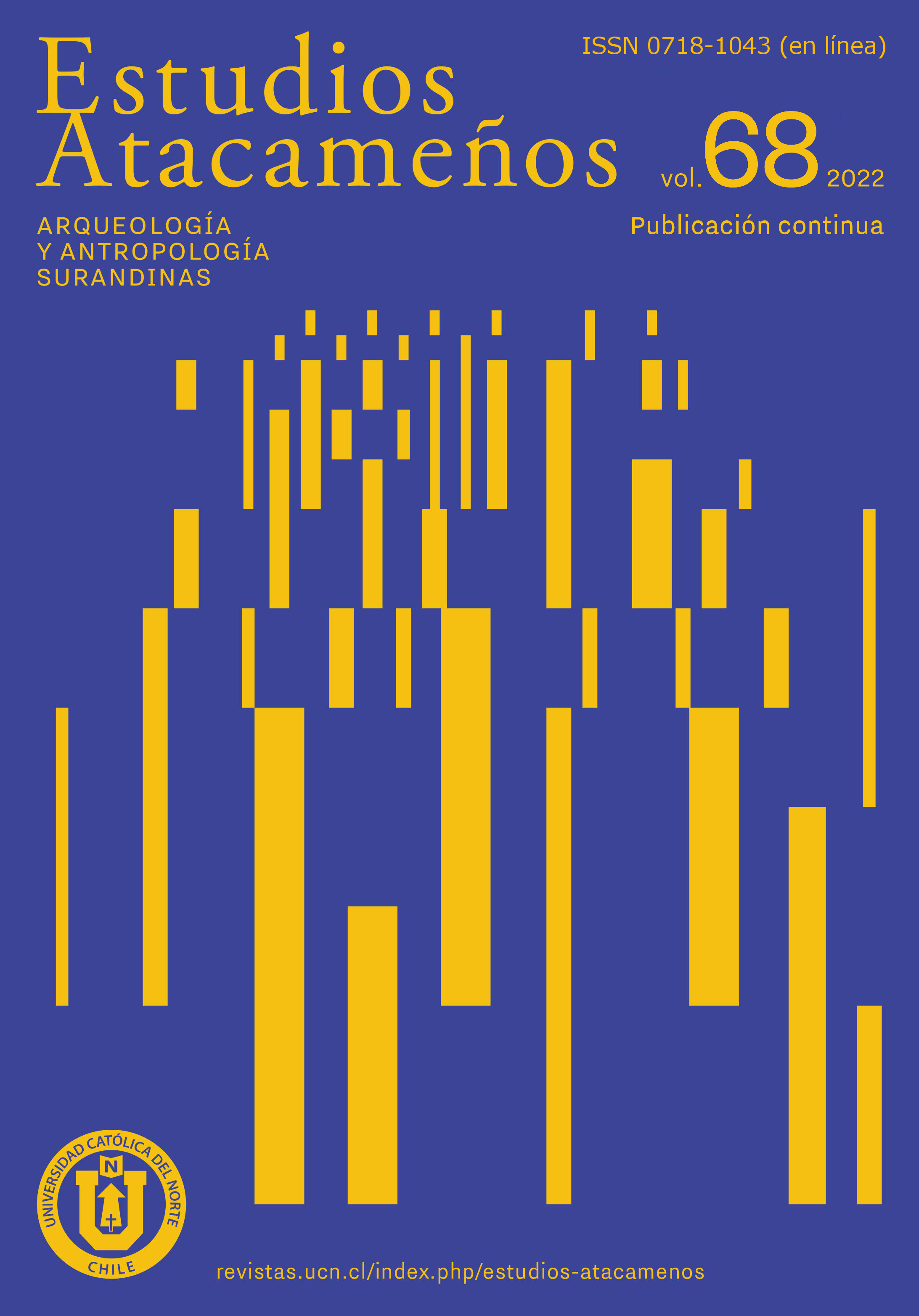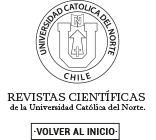Rock art of Cueva Huenul 1 site (Neuquén, Argentina)
a persistent place in northwestern Patagonia
DOI:
https://doi.org/10.22199/issn.0718-1043-2022-0009Keywords:
rock paintings, visual communication, occupational history, landscape marking, placemakingAbstract
This paper presents the initial results of the archaeological analysis of rock art from Huenul Cave 1 (CH1) (Neuquén, Patagonia, Argentina). The site’s robust chronostratigraphic sequence frames human occupations between 12,000-300 calibrated years BP. The paper classifies rock art motifs on the basis of several variables and the available archaeometric data, including recently obtained radiocarbon dating by AMS of some images. It also proposes a production sequence for the motifs by connecting temporal data from other proxies to assign a chronology to the different moments of rock art production. These results are assessed in conjunction with other evidence found at CH1, which provides independent but complementary data regarding the history of its use. This integration indicates that visual communication of information, which took the form of rock art, played a fundamental –yet versatile– role in the occupational history of the site and the region. While the occupation of CH1 was neither intense nor continuous during the Holocene, rock art was a key placemaking device that shaped CH1 as a “persistent place” in the social geography of human groups in northern Patagonia.
Downloads
References
Acevedo, A. y Fiore, D. (2020). Imágenes, códigos y comunicación: un análisis del arte rupestre en el Extremo Sur del Macizo del Deseado (Patagonia, Argentina). Arqueología, 26(2), 127-155. doi:10.34096/arqueologia.t26.n2.5835
Adris, S. I. (2013). El arte rupestre en espacios persistentes de Amaicha del Valle (Tucumán, Argentina). Mundo de Antes, 8, 35-59.
Aschero, C. A. (1988). Pinturas rupestres, actividades y recursos naturales: un encuadre arqueológico. En Yacobaccio, H., Borrero, L. A., García, L., Politis, G., Aschero, C. y Bellelli, C. (Eds.). Arqueología Contemporánea Argentina. Actualidad y Perspectivas (pp. 109-145). Buenos Aires: Ediciones Búsqueda.
Aschero, C. A. (2010). Arqueología de Puna y Patagonia centro-meridional: comentarios generales y aportes al estudio de los cazadores-recolectores puneños en los proyectos dirigidos desde el IAM (1991-2009). En Arenas, P., Aschero, A. C. y Taboada, C. (Eds.). Rastros en el Camino... Trayectos e identidades de una Institución. Homenaje a los 80 años del IAM – UNT (pp. 257-293). San Miguel de Tucumán: Editorial EDUNT.
Aschero, C. A. y Podestá, M. M. (1986). El arte rupestre en asentamientos precerámicos de la Puna argentina. Runa, XVI, 29-57. doi: 10.34096/runa.v16i0.4389
Barberena, R. (2013). Biogeografía, competencia y demarcación simbólica del espacio: modelo arqueológico para el norte de Neuquén. Intersecciones en Antropología, 14, 367-381.
Barberena, R., Borrazzo, K., Rughini, A. A., Romero, G., Pompei, M. P., Llano, C. L., de Porras, M. E., Durán, V., Stern, Ch. R., Re, A., Estrella, D., Forasiepee, A., Fernández, F. J., Chidiak, M., Acuña, L., Gasco, A. y Quiroga, M. N. (2015). Perspectivas arqueológicas para Patagonia septentrional: sitio Cueva Huenul 1 (provincia del Neuquén, Argentina). Magallania, 43(1), 1-27. doi: 10.4067/S0718-22442015000100009
Barberena, R., Fernández, M. V., Rughini, A. A., Borrazzo, K. B., Garvey, R.; Lucero Ferreyra, G. F., Della Negra, C., Durán, V., Cortegoso, V., Giesso, M., Klesner, C., MacDonald, B. L. y Glascock, M. D. (2019). Deconstructing a Complex Obsidian Landscape in Northwestern Patagonia: A Geoarchaeological and Geochemical Approach. Geoarchaeology, 34, 30-41. doi: 10.1002/gea.21701
Barberena, R., Hajduk, A., Gil, A., Neme, G., Durán, V., Glascock, M. D., Giesso, M., Borrazzo, M., Pompei, M. de la P., Salgán, M. L., Cortegoso, V., Villarosa, G. y Rughini, A. A. (2011). Obsidian in the south-central Andes: geological, geochemical, and archaeological assessment of north Patagonian Sources (Argentina). Quaternary International, 245, 25-36. doi: 10.1016/j.quaint.2010.09.013
Barberena, R., Romero Villanueva, G., Lucero, G., Fernández, M. V. y Quiroga, M. N. (2017). Espacios internodales en Patagonia septentrional: biogeografía, información y mecanismos sociales de interacción. Estudios Atacameños. Arqueología y Antropología Surandinas, 56, 57-75. doi: 10.4067/S0718-10432017005000006
Barton, C. M., Clark, G. A. y Cohen, A. E. (1994). Art as information: explaining Upper Paleolithic art in Western Europe. World Archaeology, 26(2), 185-207. doi: 10.1080/00438243.1994.9980272
Bednarik, R. (2001). Rock art science. The scientific study of palaeoart. New Delhi: Brepols Publishers.
Bednarik, R. (2007). The technology of rock art. En R. Bednarik (Ed.). Rock Art Science. The Scientific Study of Palaeoart (pp. 37-54). New Delhi: Aryan Books International. doi: 10.3390/arts2010001
Belardi, J. B., Barberena, R., Goñi, R. y Re, A. (2016). The Development of a Legacy: Evolution, Biogeography and Archaeological Landscapes. En Cardillo, M. y Muscio, H. (Eds.). Darwin’s Legacy: The Status of Evolutionary Archaeology in Argentina. Tribute to the 200th anniversary of the birth of Charles Darwin and the 150th anniversary of the publication of The Origin of Species (pp. 89-98). Buenos Aires: IMHICIHU-CONICET.
Borrero, L. A. (1982). Factores de localización de sitios arqueológicos en la región del curso inferior del río Limay. Primera Reunión Nacional de Ciencias del Hombre en Zonas Áridas. Mendoza, Argentina.
Borrero, L. A. (1989-1990). Evolución cultural divergente en la Patagonia austral. Anales del Instituto de la Patagonia (Serie Ciencias Sociales), 19, 133-139.
Borrero, L. A. (1994-1995). Arqueología de la Patagonia. Palimpsesto. Revista de Arqueología, 4, 9-56.
Brook, G. A., Franco, N. V., Cherkinsky, A., Acevedo, A., Fiore, D., Pope, T. R., Weimar III, R. D., Neher. G., Evans, H. A. y Salguero, T. T. (2018). Pigments, binders, and ages of rock art at Viuda Quenzana, Santa Cruz, Patagonia (Argentina). Journal of Archaeological Science: Reports, 21, 47-63. doi: 10.1016/j.jasrep.2018.01.004
Carden, N. (2008). Imágenes a través del tiempo. Arte rupestre y construcción social del paisaje en la Meseta Central de Santa Cruz. Buenos Aires: Sociedad Argentina de Antropología.
Carden, N. y Miotti, L. (2020). Unraveling rock art palimpsests through superimpositions: The definition of painting episodes in Los Toldos (southern Patagonia) as a baseline for chronology. Journal of Archaeological Science: Reports, 30, 102265. doi: 10.1016/j.jasrep.2020.102265
Carden, N. y Prates, L. (2015). Pinturas rupestres en un espacio funerario: el caso del sitio Cueva Galpón (noreste de Patagonia). Magallania, 43(1), 117-136. doi: 10.4067/S0718-22442015000100008
Charlin, J. y Borrero, L. A. (2012). Rock art, inherited landscapes, and human populations in Southern Patagonia. En J. McDonald y P. Veth (Eds.), A Companion to Rock Art. Wiley Blackwell Companions to Anthropology (pp. 381-397). Chichester: Wiley-Blackwell.
Conkey, M. W. (1984). To Find Ourselves: Art and Social Geography of Prehistoric Hunter-Gatherers. En Schrire, C. (Ed.), Past and Present in Hunter-Gatherer Studies (pp. 253-276). New York, NY: Academic Press.
Conkey, M. W. (2010). Images without Words: The Construction of Prehistoric Imaginaries for Definitions of ‘Us’. Journal of Visual Culture, 9(3), 272-283. doi: 10.1177/1470412910380341
Cordero, R., Lanzelotti, S. y Panarello, H. (2002). INGEIS Radiocarbon Laboratory Dates IV. Radiocarbon, 44(1), 181-193. doi: 10.1017/S003382220006478X
David, B. y Lourandos, H. (1998). Rock art and socio-demography in northeastern Australian prehistory. World Archaeology, 30(2), 193-219. doi: 10.1080/00438243.1998.9980407
Durán, V., Giesso, M., Glascock, M. D., Neme, G., Gil, A. y Sanhueza, L. (2004). Estudio de fuentes de aprovisionamiento y redes de distribución de obsidiana durante el Holoceno Tardío en el sur de Mendoza (Argentina). Estudios Atacameños, 28, 25-43. doi: 10.4067/S0718-10432004002800004
Fernández, J. (1974-1976). Estudios sobre el arte rupestre de la provincia del Neuquén. Anales de Arqueología y Etnología, 29-31, 5-36.
Fernández, J. (1978). Corpus de arte rupestre neuquino. Primera parte. Revista del Museo Provincial, 1, 17-93.
Fernández, M. V., Barberena, R., Rughini, A. A., Giesso, M., Cortegoso, V., Durán, V., Romero Villanueva, G. Borrazzo, K., Lucero, G., Garvey, R., MacDonald, B. L. y Glascock, M. D. (2017). Obsidian geochemistry, geoarchaeology, and lithic technology in northwestern Patagonia (Argentina). Journal of Archaeological Science: Reports, 13, 372-381. doi:10.1016/j.jasrep.2017.04.009
Figuerero Torres, M. J. y Mengoni Goñalons, G. L. (2010). Lugares persistentes y vacíos ocupacionales en sociedades cazadoras-recolectoras de la Patagonia centro-meridional. En Actas XVII Congreso Nacional de Arqueología Chilena - Valdivia 2006 (pp. 1319-1330). Valdivia: Sociedad Chilena de Arqueología.
Fiore, D. (2006). Poblamiento de imágenes: arte rupestre y colonización de la Patagonia. Variabilidad y ritmos de cambio en tiempo y espacio. En Fiore, D. y Podestá. M. M. (Eds.). Tramas en la Piedra. Producción y usos del arte rupestre (pp. 43-61). Buenos Aires: WAC, SAA y AINA.
Fiore, D. (2009). La materialidad del arte. Modelos económicos, tecnológicos y cognitivos visuales. En Barberena, R., Borrazzo, K. y Borrero, L. A. (Eds.). Perspectivas actuales en Arqueología Argentina (pp. 123-154). Buenos Aires: CONICET-IMHICIHU.
Fiore, D. (2018). The materiality of rock art. Image-making technology and economy viewed from Patagonia. En Troncoso, A., Armstrong, F. y Nash, G. (Eds.). Archaeologies of Rock Art: South American Perspectives (pp. 23-57). London: Routledge.
Fiore, D. y Acevedo, A. (2016). El Trabajo del arte. Una evaluación de la inversión laboral en la producción de arte rupestre: el caso del Cañadón Yaten Guajen (Santa Cruz, Patagonia, Argentina). En Rocchietti, A. M., Oliva, F., Solomita, F. y Algrain, M. (Eds.). Imágenes rupestres, lugares y regiones (pp. 485-504). Rosario: Universidad Nacional de Rosario.
Fiore, D. y Acevedo, A. (2018). Paisajes rupestres. La identificación de patrones de producción y distribución de arte parietal en escalas espaciales amplias (Cañadón Yaten Guajen, Santa Cruz, Patagonia argentina). Arqueología, 24(2), 177-207. doi: 10.34096/arqueologia.t24.n2.5006
Gamble, C. (1982). Interaction and Alliance in Paleolithic society. Man, 17, 92-107. doi: 10.2307/2802103
Gamble, C. (1990). El Poblamiento Paleolítico de Europa. Madrid: Crítica.
Gordón, F., Barberena, R. y Bernal, V. (Eds.). (2017). El poblamiento humano del norte del Neuquén: Estado actual del conocimiento y perspectivas. Buenos Aires: Aspha.
Haas, R. y Kuhn, S. L. (2019). Forager Mobility in Constructed Environments. Current Anthropology, 60(4), 499-535. doi: 10.1086/704710
Hajduk, A., Albornoz, A. M. y Lezcano, M. J. (2011). Espacio, cultura y tiempo: el corredor bioceánico desde la perspectiva arqueológica. En Navarro Floria, P. y Delrio, W. (Comps.). Cultura y espacio. Araucanía-Norpatagonia (pp. 262-292). Bariloche: Universidad Nacional de Río Negro.
Harman, J. (2008 [2005]). Using Decorrelation Stretch to Enhance Rock Art Images. Recuperado de: https://www.dstretch.com
Hartley R. J. (1992). Rock art on the Northern Colorado Plateau: variability in content and context. Aldershot, UK: Avebury.
Holdaway, S. J. y Wandsnider, L. A. (2006). Temporal Scales and Archaeological Landscapes from the Eastern Desert of Australia and Intermontane North America. En Holdaway, S. J. y Wandsnider, L. (Eds.). Confronting scales in Archaeology. Issues of Theory and Practice (pp.183-202). New York, NY: Kluwer.
Jochim, M. A. (1981). Strategies for Survival, Cultural Behavior in an Ecological Context. London: Academic Press.
Jochim, M. A. (1983). Paleolithic cave art in ecological perspective. En Bailey, G. (Ed.). Hunter-gatherer economy in prehistory (pp. 212-219). Cambridge: Cambridge University Press.
Kuhn, S. (2004). Upper Paleolithic raw material economies at Ücagizli cave, Turkey. Journal of Anthropological Archaeology, 23, 431-448. doi: 10.1016/j.jaa.2004.09.001
Lahlil, S., Lebon, M., Beck, L., Rousselière, H., Vignaud, C., Reiche, I., Menu, M., Paillet, P. y Plassard, F. (2012). The first in situ micro-Raman spectroscopic analysis of prehistoric cave art of Rouffignac St-Cernin, France. Journal of Raman Spectroscopy, 43, 1637-1643. doi: 10.1002/jrs.4115
Langley, M. C. (2013). Storied landscapes makes us (Modern) Human: Landscape socialisation in the Palaeolithic and consequences for the archaeological record. Journal of Anthropological Archaeology, 32(4), 614-629. doi: 10.1016/j.jaa.2013.10.001
Layton, R. (1991). The Anthropology of Art (2nd edition). Cambridge: Cambridge University Press.
Layton, R. (1992). Australian Rock Art. A New Synthesis. Cambridge: Cambridge University Press.
Littleton, J. y Allen, H. (2007). Hunter-Gatherer Burials and the Creation of Persistent Places in Southeastern Australia. Journal of Anthropological Archaeology, 26, 283-298. doi: 10.1016/j.jaa.2006.11.004
Llano, C., De Porras, M. E., Barberena, R., Timpson, A., Beltrame, M. O. y Marsh, E. J. (2020). Human resilience to Holocene climate changes inferred from rodent middens in drylands of northwestern Patagonia (Argentina). Palaeogeography, Palaeoclimatology, Palaeoecology, 109894. doi: 10.1016/j.palaeo.2020.109894
Llano, C., Sosa, P., Sánchez Campo, C. y Barberena, R. (2019). Arqueobotánica de Cueva Huenul 1 (Neuquén, Argentina): selección y procesamiento de especies vegetales. Intersecciones en Antropología, 20(2), 211-223. doi: 10.37176/iea.20.2.2019.446
Martel, Á., Rodríguez Curletto, S. y Del Bel, E. (2012). Arte rupestre y espacios de memoria: las representaciones del sitio Confluencia (Antofagasta de la Sierra, Catamarca, Argentina). Revista de Antropología, 25, 121-162. doi: 10.5354/0719-1472.2012.20290
Martínez, G., Santos Valero, F., Flensborg, G., Carden, N., Stoessel, L., Alcaraz, A. P. y Borges Vaz, E. (2017). Was There a Process of Regionalization in Northeastern Patagonia During the Late Holocene? The Journal of Island and Coastal Archaeology, 12(1), 95-114. doi: 10.1080/15564894.2016.1163756
McDonald, J. (2008). Dreamtime superhighway: an analysis of Sydney Basin rock art and prehistoric information exchange. Terra Australis, 27. Canberra: ANU Press. doi: 10.26530/OAPEN_459083
McDonald, J. y Veth, P. (2006). Rock art and social identity: a comparison of graphic systems operating in arid and fertile environments in the Holocene. En Lilley, I. (Ed.). Archaeology of Oceania: Australia and the Pacific Islands (pp. 96-115). Malden, MA: Blackwell. doi: 10.1002/9780470773475
McDonald, J. y Veth, P. (2011). Information exchange among Hunter-Gatherers of the western desert of Australia. En Whallon, R., Lovis, W. e Hitchcock, R. (Eds.). Ideas, Debates, and Perspectives 5. Information and its Role in Hunter-Gatherer Bands (pp. 221-233). Los Ángeles, CA: Cotsen Institute of Archaeology Press.
McDonald, J. y Veth, P. (2013). The Archaeology of Memory: The Recursive Relationship of Martu Rock Art and Place. Anthropological Forum: A Journal of Social Anthropology and Comparative Sociology, 23(4), 367-386. doi: 10.1080/00664677.2013.843444
Méndez, C., Nuevo-Delaunay, A. y Reyes, O. (2020). Arqueología de Aisén. 12 mil años de ocupación. Valdivia: Imprenta América.
Menghin, O. (1957). Estilos del arte rupestre de Patagonia. Acta Praehistorica, I, 57-87.
Minnegal, M. (1995). A necessary unity: the articulation of ecological and social explanations of behavior. Man (NS), 2, 141-158. doi: 10.2307/3034637
Morphy, H. (1991). Ancestral Connections: Art and an Aboriginal System of Knowledge. Chicago, IL: Chicago University Press.
Motta, A. P. y Romero Villanueva, G. (2020). South American Art. En C. Smith (Ed.). Encyclopedia of Global Archaeology. Springer. doi: 10.1007/978-3-319-51726-1_2914-1
Munsell (1994). Munsell Soil Color Chart. Baltimore, MD: Munsell Color Ed.
Narciso, V., Santamaría, G. y Zanettini, J. C. M. (2004). Hoja Geológica 3769-I, Barrancas. Provincias de Mendoza y Neuquén. Boletín del Instituto de Geología y Recursos Minerales, 253.
Neme, G. y Gil, A. (2008). Biogeografía humana en los Andes meridionales: tendencias arqueológicas en el sur de Mendoza. Chungara, 4(1), 5-18. doi: 10.4067/S0717-73562008000100002
Osborn, A. e Hitchcock, R. K. (2019). Information sharing in times of scarcity: an ethnographic and archaeological examination of drought strategies in the Kalahari Desert and the central plains of North America. En Lavi, N. y Friesem, D. E. (Eds.). Towards a Broader View of Hunter-Gatherer Sharing (pp. 123-141). Cambridge: McDonald Institute for Archaeological Research. doi: 10.17863/CAM.47185
Páez, M., Quintana, F. y Pérez, C. (2004). Biogeografía de las regiones áridas y semiáridas entre 35º y 39º S, Argentina. Boletín de la Sociedad Argentina de Botánica, 39(3-4), 171-180.
Perez, S. I., Postillone, M., Rindel, D., Gobbo, D., González, P. N. y Bernal, V. (2016). Peopling time, spatial occupation and demography of late Pleistocene-Holocene human population from Patagonia. Quaternary International, 425, 214-223. doi: 10.1016/j.quaint.2016.05.004
Prates, L. y Di Prado, V. (2013). Sitios con entierros humanos y ocupaciones residenciales en la cuenca del río Negro (Norpatagonia, Argentina): diacronía y multicausalidad. Latin American Antiquity, 24(4), 1-16. doi: 10.7183/1045-6635.24.4.451
Re, A. (2016). Superimpositions and Attitudes Towards Pre-existing Rock Art: a Case Study in Southern Patagonia. En Bednarik, R., Fiore, D., Basile, M. V., Kumar, G. y Huisheng, T. (Eds.). Palaeoart and Materiality: Scientific Approaches to Rock Art (pp. 15-30). Oxford: Archaeopress Publishing Ltd.
Re, A. y Belardi, J. B. (2019). Pinturas rupestres y comunicación en la cuenca de los lagos Tar y San Martin (provincia de Santa Cruz). Revista del Museo de Antropología, 12(1), 73-84. doi: 10.31048/1852.4826.v12.n1.19051
Rindel, D. D., Perez, S. I., Romero Villanueva, G., Gobbo, D. y Feely, A. (2018). Investigaciones arqueológicas en el noreste de Neuquén: evidencias materiales y tendencias distribucionales preliminares. Intersecciones en Antropología, 19, 99-110.
Riris, P. y Arroyo-Kalin, M. (2019). Widespread population decline in South America correlates with mid-Holocene climate change. Nature Scientific Reports 9, 6850. doi: 10.1038/s41598-019-43086-w
Romero, G. y Re, A. (2014). Representaciones rupestres del noreste de Neuquén (Patagonia septentrional). Primeras tendencias espaciales y temporales. Comechingonia. Revista de Arqueología, 18(1), 73-92. doi: 10.37603/2250.7728.v18.n1.27627
Romero Villanueva, G. (2016). La clasificación de las pinturas rupestres del noreste de Neuquén, Patagonia septentrional. En Rocchietti, A. M., Oliva, F., Solomita, F. y Algrain, M. (Eds.). Imágenes rupestres, lugares y regiones (pp. 441-452). Rosario: Universidad Nacional de Rosario.
Romero Villanueva, G. (2019a). Biogeografía humana y circulación de información en el norte del Neuquén. Un análisis arqueológico sobre la comunicación visual en grupos cazadores-recolectores del noroeste de Patagonia. Tesis doctoral. Facultad de Filosofía y Letras, Universidad de Buenos Aires, Buenos Aires, Argentina.
Romero Villanueva, G. (2019b). La contextualización temporal del arte rupestre de la Localidad Barrancas-Buta Ranquil (norte del Neuquén). Métodos, indicadores y aportes al poblamiento visual del noroeste de Patagonia. En Rolandi, D. (Presidencia), III Congreso Nacional de Arte Rupestre. Ciudad Autónoma de Buenos Aires, Argentina.
Romero Villanueva, G. (2021). Arte rupestre y biogeografía humana en el norte del Neuquén (Patagonia): lineamientos conceptuales para el estudio multi-escalar de procesos de comunicación visual y circulación de información. Relaciones de la Sociedad Argentina de Antropología, 46(2), doi: 10.24215/18521479e021
Romero Villanueva, G. y Barberena, R. (2017). Los huesos de guanaco pintados de Cueva Huenul 1 (norte del Neuquén, Patagonia septentrional). Relaciones de la Sociedad Argentina de Antropología, 42(2), 369-377.
Romero Villanueva, G., Lucero, G. y Barberena, R. (2020). Andean summer-break: Rock art insights on information networks and social interaction in a desert-highland interface in northern Patagonia (South America). Cuadernos de Arte Prehistórico, NE1, 89-121.
Romero Villanueva, G., Rughini, A. A., Paiva, J., Garvey, R., Brera, A., Sánchez, C., Borrazzo, K., Frigolé, C., Gasco, A., Llano, C., Fernández, M. V., Magliolo, R. y Barberena, R. (2021). Historia ocupacional y organización espacial humana en Patagonia: una discusión desde Cueva Yagui (provincia del Neuquén, Argentina). Chungara. Revista de Antropología Chilena. (En evaluación)
Romero Villanueva, G., Sepúlveda, M., Cherkinsky, A., Cárcamo, J., Gutiérrez, S. y Barberena, R. (2021). First direct AMS dating of northern Patagonia rock art (South America). (En preparación)
Roth, B. J. (2016). The significance of “Persistent Places” in Shaping Regional Settlement History. The Case of the Mimbres Mogollón. En Sullivan III, A. P. y Olszewski, D. I. (Eds.). Archaeological Variability and Interpretation in Global Perspective (pp. 53-70). Boulder, CO: University Press of Colorado.
Rughini, A. A., Pompei, M. P., Borrazzo, K. y Barberena, R. (2021). Tecnología lítica e historia ocupacional en Cueva Huenul 1 (localidad Barrancas-Buta Ranquil, Provincia del Neuquén, Argentina). Arqueología, 27(1), 139-160. doi:10.34096/arqueologia.t27.n1.7671
Rughini, A. A., Romero Villanueva, G., Lucero, G., Cardillo, M., Borrazzo, K., Fernández, M. V., Brera, A., Frigolé, C., Castillo, A., Vitores, M., Llano, C., Garvey, R., y Barberena, R. (2020). Uso humano del espacio en un paisaje andino-patagónico: enfoque distribucional y biogeográfico. Latin American Antiquity, 31(2), 595-614. doi: 10.1017/laq.2020.22
Schlanger, S. (1992). Recognizing Persistent Places in Anasazi Settlement Systems. En J. Rossignol y L. Wandsnider (Eds.), Space, Time and Archaeological Landscapes (pp. 91-112). New York, NY: Plenum Press.
Schobinger, J. (1985). Áreas intermedias o marginales. En J. Schobinger y C. Gradin, Cazadores de la Patagonia y agricultores andinos. Arte rupestre de la Argentina (pp. 80-91). Madrid: Encuentro Ediciones.
Sepúlveda, M. y V. Wright, V. (2018). Pigmentos, pinturas rupestres y murales. En Chapoulie, R., Sepúlveda, M., Del-Solar-Velarde, N. y Wright, V. (Eds.). Arqueometría: estudios analíticos de materiales arqueológicos (pp. 369-385). Lima: Instituto Francés de Estudios Andinos – Université Bordeaux Montaigne – Universidad de Tarapacá.
Shaw, A., Bates, M., Conneller, C., Gamble, C., Julien, M-A., McNabb, J., Pope, M. y Scott, B. (2016). The archaeology of persistent places: the Palaeolithic case of La Cotte de St. Brelade, Jersey. Antiquity, 90(354), 1437-1453. doi: 10.15184/aqy.2016.212
Taçon, P. (1994). Socialising landscapes: the long-term implications of signs, symbols and marks on the land. Archaeology in Oceania, 29, 117-129. doi: 10.1002/arco.1994.29.3.117
Taçon, P. S. C. y Chippindale, C. (1998). An archaeology of rock-art through informed methods and formal methods. En Chippindale, C. y Taçon, P. S. C. (Eds.). The archaeology of rock art (pp. 1-10). Cambridge, MA: Cambridge University Press.
Timpson, A., Barberena, R., Thomas, M. G., Méndez, C. y Manning, K. (2021). Directly modelling population dynamics in the South American Arid Diagonal using 14C dates. Philosophical Transactions of the Royal Society B Biological Sciences, 376(1816), 20190723. doi: 10.1098/rstb.2019.0723
Tomasini, E., Halac, E., Reinoso, M., Liscia, E. y Maier, M. (2012). Micro-Raman spectroscopy of carbon-based black pigments. Journal of Archaeological Science, 43, 1671-1675. doi:10.1002/jrs.4159
Troncoso, A. (2008). Arte rupestre en la cuenca del río Aconcagua: formas, sintaxis, estilo y poder. Traballos de Arqueoloxía e Patrimonio, 39.
Troncoso, A. (2019). Rock Art, Historical Ontologies, and the Genealogy of Landscape. A Case Study from the Southern Andes (30° lat. S). En Lozada, M. C. y Tantaleán, H. (Eds.). Andean Ontologies: New Archaeological Perspectives. Gainesville, FL: University Press of Florida. doi:10.5744/florida/9780813056371.003.0011
Troncoso, A., Armstrong, F. y Basile, M. (2017). Art in Central and South America: Social settings and regional diversity. En David, B. y McNiven, I. J. (Eds.). The Oxford Handbook of the Archaeology and Anthropology of Rock Art. Oxford: Oxford University Press. doi: 10.1093/oxfordhb/9780190607357.013.53.
Troncoso, A., Moya, F. y Basile, M. (2016). Rock art and social networks among hunter gatherers of north-central Chile. Journal of Anthropological Archaeology 42, 154-168. doi: 10.1016/j.jaa.2016.04.007
Troncoso, A., Moya, F., Sepúlveda, M. y Carcamo, J. (2017). First absolute dating of Andean hunter-gatherer rock art paintings from North Central Chile. Archaeological and Anthropological Sciences, 9, 223-232. doi: 10.1007/s12520-015-0282-z
Valenzuela, D., Sepúlveda, M., Santoro, C. M. y Montt, I. (2014). Arte rupestre, estilo y cronología: la necesidad de un contexto histórico para las manifestaciones rupestres en costa y valles del extremo norte de Chile. Interciencia, 39(7), 444-449.
Vargas, F. E., Lanata, J., Abramson, G., Kuperman, M. N. y Fiore, D. (2020). Digging the topology of rock art in Northwestern Patagonia. Journal of Complex Networks, 8(4), cnz033. doi: 10.1093/comnet/cnz033
Veth, P. M. (1993). Islands in the Interior. The Dynamics of Prehistoric Adaptations within the Arid Zone of Australia. International Monographs in Prehistory: Archaeological Series, 3. Ann Arbor, MI: Berghahn Books.
Veth, P. M. (2005). Cycles of aridity and human mobility: Risk minimization among late Pleistocene foragers of the Western Desert, Australia. En Veth, P., Smith, M. e Hiscock, P. (Eds.). Desert Peoples. Archaeological Perspectives (pp. 100-115). Oxford: Blackwell Publishing Ltd. doi:10.1002/9780470774632.ch6
Vita-Finzi, C. (1978). Archaeological Sites in their Setting. London: Thames and Hudson.
Whallon, R. (2006). Social networks and information: Non “utilitarian” mobility among hunther-gatherers. Journal of Anthropological Archaeology, 25(2), 259-270. doi: 10.1016/j.jaa.2005.11.004
Whallon, R. (2011). An Introduction to Information and Its Role in Hunter-Gatherer Bands. En Whallon, R., Lovis, W. Hitchcock, R. (Eds.). Ideas, Debates, and Perspectives 5. Information and its Role in Hunter-Gatherer Bands (pp. 1-27). Los Ángeles, CA: Cotsen Institute of Archaeology Press.
Wiessner, P. (1983). Style and social information in Kalahari San projectile points. American Antiquity, 48(2), 253-276. doi: 10.2307/280450
Wobst, M. (1977). Stylistic behavior and information exchange. En Cleland, C. E. (Ed.). For the director: research essays in honor of James B. Griffin (pp. 317-342). Ann Arbor, MI: University of Michigan.
Downloads
Published
Issue
Section
License
Copyright (c) 2022 Guadalupe Romero Villanueva

This work is licensed under a Creative Commons Attribution 4.0 International License.

All works published in Revista Estudios Atacameños (ISSN on line:0718-1043) Revista Estudios Atacameños Creative Commons International 4.0 attribution (CC BY 4.0) licence.
Authors remain the owners of their work and may republish their articles elsewhere without having to request permission, as long as they indicate that the work was originally published in Revista Estudios Atacameños (ISSN on liine:0718-1043).












